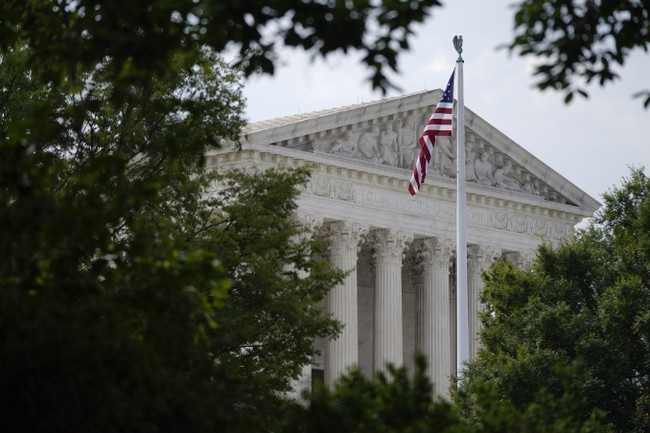
www.thecollector.com
How Saint Helena and the True Cross Changed an Empire
Saint Helena, the mother of Emperor Constantine, is credited by Saint Ambrose of Milan with the recovery of perhaps Christendom’s most sacred relic: The True Cross. Whether or not she actually was the one to find it was secondary to Ambrose’s primary objective — to join imperial protection to (and subject it to) the authority of the Church, and to avoid a repeat of the Church’s misfortunes experienced since the death of Constantine, the first Christian emperor.
Saint Helena: Mother of the Emperor
Saint Helena, by Fridolin Leibe, Source: Wikimedia Commons
On February 25, 395, Bishop Aurelius Ambrosius of Milan, aka Saint Ambrose, delivered De Obitu Theodosii in honor of the late Emperor Theodosius, as the funeral procession was about to leave for Constantinople. The cathedral air was thick with incense, Latin, and political tension; the Roman Empire, reunited by Theodosius three years prior, was about to be split again among his two young sons. The fate of everyone, including the Church, hung in the balance. It was therefore not by chance or whimsy that Ambrose included in his imperial tribute an account of the discovery of the True Cross that occurred almost seventy years earlier, by Augusta Helena. Rather it was to declare the marriage of the Empire to the Church and to formalize the latter’s effort to claim dominance over — while demanding protection from — the former.
Ambrose was not actually present to witness the events he conveyed; his eulogy revealed what was important to him rather than what really happened. What is known of Helena’s activities while touring the Holy Land comes from the records of Bishop Eusebius Pamphilus of Caesarea — a contemporary of the Augusta who accompanied her on much of her journey. Eusebius never mentioned Helena finding the Cross.
Constantine the Great, First Christian Emperor of Rome and family man, photo by Merulana, Source: Wikimedia Commons
Helena made her journey between 326 and 329, and it was either before or during that trip that Constantine gave her the mission to recover relics and found churches in the Holy Land. The actual inspiration for the trip is still unknown, though much attention is given to the family troubles that erupted before she departed. In May of 326, Constantine ordered that Crispus, his eldest son by his concubine, Minerva, be executed. In the following weeks he then also ordered his wife, Fausta, murdered. The motivations are unclear — rumors of rivalry and adultery have been entertained — but his intention was determined with his order to have both of them stricken from the public record.
Understandably these events were met with some concern by Church leaders (not to mention surviving family members). Shortly after, Helena, Constantine’s eighty-year-old mother, left for her tour of the Holy Land, in what became known as a great show of piety.
It is certain that Helena traveled with all the pomp and grandeur of a dowager empress, she was certainly not impoverished. Her motivations could have been a sincere desire to visit the Holy Land, a wish to escape the bloodletting at home, or even a discrete exile.
One of the countless fragments of the “true cross,” now in Vienna, photo by Gryffindor, 2007, Source: Wikimedia Commons
Eusebius did not mention Fausta or Crispus as he faithfully (if not sycophantically) carried out the order of damnatio memoriae, going so far as to erase Crispus from later editions of his earlier works. However, in Book III of Eusebius’ work, Life of the Blessed Emperor Constantine, Eusebius concerned himself with the construction of the Church of the Holy Sepulcher upon Golgotha. It was within Golgotha that Ambrose stated Helena discovered the True Cross. According to Eusebius, it was Constantine who ordered the Church to be built, not Helena.
In doing so, it was officially Constantine who ordered the sanctuary of Venus (built by Hadrian around 130 to obliterate a site of reverence for the then unpopular Christians) be demolished and the soil removed, whereupon the cave in which Christ was interred was found. Upon this site, Constantine built the Church of the Holy Sepulcher and personally supplied the funding for the whole project.
Fragments of the “True Cross”
Church of the Holy Sepulcher — rebuilt on the ruins of the church founded by team Constantine/Helena which was razed in 1009, Source: Wikimedia Commons
In Eusebius’ history it is only after the construction was begun (and the Cross already “found”?) that Helena made her entrance upon the site; Though Eusebius does not mention Helena with the Cross, he stated that after Helena completed her journey Constantine honored her by bankrolling the construction of churches in the Holy Land. Helena was only the founder because Constantine had built these monuments in her name.
The Augusta’s further activities in the Holy Land included giving out alms and overseeing the construction of churches in Jerusalem, Bethlehem, and on the Mount of Olives, which associated the imperial family with these important Christian locations. These churches were planned and paid for by Constantine, but Helena’s presence showed the welcome personal touch of imperial interest. She then returned to Europe and died in 329.
Eusebius does not mention the recovery of the Cross at all. With or without Helena.
While Eusebius failed to mention the recovery of the Cross in his histories, pieces purported to be parts of the Cross appeared within the next twenty years. For example:
In 351 Cyril, Patriarch of Jerusalem, wrote to the Emperor Constantius II that a heavenly sign revealed the hiding place of the Cross, during the reign of Constantius’ father, Constantine (no mention is made of his grandmother).
An inscription on a Mauritanian reliquary allegedly containing soil from Bethlehem and pieces of the Cross has been dated to 359.
Another reliquary used in the founding of a church in Nuvel was dated to 371.
And another from 379.
Icon depicting Constantine and his mother sharing the cross, (or playing picking sides?), 14th century, Source: Wikimedia Commons
These examples illustrate a following of the Cross was formed not very long after Helena’s tour and venerated pieces from the True Cross had appeared — perhaps enough to build a fleet of arks. The timing is close enough to make Helena a plausible candidate for the discoverer, but Eusebius does not mention it.
Regardless of this omission and why, by the 380s, it was universally accepted that the Cross was “found,” with pieces observed in Africa, Europe, and the Middle East, while a large piece remained in Jerusalem, gilded in silver. Yet another piece resided in Constantinople.
At the same time, Christianity was now the nominal official religion, although it had not had an easy time of it. Different interpretations of the points of Christianity and even the nature of Christ kept the Church from becoming united or stable for long. When Constantine officially favored Christianity, he tried to set matters straight in the first ecumenical council at Nicaea in 324. By using his imperial authority to summon the Church leaders, he was also looking to place the Church under the control of the state — he was emperor after all.
Caesaropapism and the Struggle for Orthodoxy
Council of Nicaea, 325 CE, from Mégalo Metéoron Monastery in Greece, photo by Jjensen, 2008, Source: Wikimedia Commons
At the head of the Council of Nicaea’s itinerary were the various interpretations of Christianity including the Arian controversy. Led by Bishop Arius of Alexandria, Arians believed that Christ, though more perfect than man, was still just another of God’s creations. This contradicted the orthodox view that Christ and God were of the same substance, though Christ became mortal to die to absolve humanity of its sins. At the end of the council, Constantine favored the orthodox view, founded the Nicene Creed, and declared Arianism heretical.
This would have been fine and good if the Arians had given up and gone home as conforming Christians. Instead, Arius stubbornly continued preaching up and down the Eastern half of the Empire and beyond, his teachings reaching many Germanic tribes in the West. By the 330s even Constantine became complacent and relaxed about the enforcement of the Nicene decision. This, unsurprisingly, upset orthodox leaders, but little could be done in the face of an emperor who failed to enforce his own edicts on the matter. He was still the emperor — the first one to protect Christianity.
Roman Empire(s) circa 330, Source: Wikimedia Commons
Constantine died in 337 and his three surviving sons inherited the Empire. At first, they divided it: Constantine II and Constans split the western provinces and Constantius II took the eastern half. Open conflict between the western brothers led to them ultimately being replaced by a usurper who was in turn defeated by Constantius II (317-361), under whom the Empire was reunited. Despite the Nicene Creed, however, Constantius II chose to support Arianism and replaced orthodox priests with Arians.
Constantius’ meddling in Church affairs caused quite a stir among the Church leaders. Secular authority over Church affairs (caesaropapism) was a contentious issue; barely acceptable when emperors favored orthodoxy (Constantine) but when they favored heresies — it was intolerable. Hiliary, the Bishop of Poitiers, called him “Constantius the Anti-Christ” just before being exiled for playing the spoil sport.
If Constantius was unpopular with the orthodox Christians, he was even more so with his troops: in 361 many rebelled declaring their general Julian, emperor. Before Constantius could settle the matter in battle, however, he died of a fever — as there was no shortage of suspects, rumors of poisoning abounded. Orthodox believers may even have suspected God’s judgment.
The good news was Julian was not an Arian; the bad news was he was a pagan. In two years Julian reversed all pro-Christian protections reducing them to second class citizens; he closed churches, restored pagan temples, and earned himself the title “the Apostate.” He also had plans for restoring the old Empire, cut short in 363, when he was killed fighting the Sassanids in Persia. His general, Jovian, assumed the crown in the field.
Solidus of Julian the Apostate, 4th century, Source: The British Museum
Jovian discretely adhered to the Nicene Creed but came out and had just enough time to restore Christianity before, without even having reached the capital, he died in his sleep. Again, theories of poisoning lurk.
Valentinian I became ruler in the west with his brother Valens in the east. Though Valentinian was an orthodox adherent, he tolerated Arians — convenient considering Valens was one — further distressing the Orthodox clergy and dividing the Christian religion.
The internal struggles of the Christian Church were exacerbated by the political climate. During Valentinian’s reign the Empire was attacked on every frontier, mostly by non-Christians, leaving him no end of stress — and ultimately a fatal stroke in 375. His sons, Gratian and Valentinian II co-inherited the western throne. Gratian favored orthodoxy but was at odds with his stepmother: Valentinian II was three years old so his mother, Justina, acted as regent. She was an Arian, keeping the Church firmly divided. Events on the political front fared no better as Gratian was cut down by rebel troops in 383 and ten years later Valentinian II was found hanged in his palace. Suicide or murder, there was no shortage of suspects that jockeyed for position.
In the east, Valens fared little better; he was killed at the battle of Adrianople in 379 by a horde of angry immigrating Goths. While violent, at least it was not an assassination.
Emperor Theodosius I, Royal Palace of Madrid, photo by Benjamín Núñez González, 2015, Source: Wikimedia Commons
Enter Theodosius, a general who was able to salvage the situation and so was recognized as emperor in the east. Two years later he called for the Church leaders to meet with him in Constantinople. While called by the state (another example of caesaropapism) this meeting was recognized as an ecumenical council. In it, Theodosius reaffirmed the validity of the Nicene Creed and declared everything else heretical.
A decade later with the suspicious hanging of young Valentinian II, Theodosius became ruler of both halves of the Empire. He was the first to do this in almost thirty years, and the last to do so ever.
During his reign, he protected the Church, disassembled pagan temples, and renounced pagan holidays (ending the pagan Olympics) through the Theodosian Decrees. Not only was Theodosius a protector of orthodoxy but he kneeled to the Church, literally, in penance after he allowed Goths to massacre over 7,000 people to suppress a rebellion in Thessalonica. He was an emperor who protected and obeyed the Church.
When Theodosius died in 395 Ambrose, the Bishop of Milan, told his version of the True Cross discovery story at the funeral. It was motivated by more than just the desire to tell a tale. Ambrose borrowed from an earlier source by Gelarius of Caesarea, written the decade before. Gelarius was also not present for Helena’s pilgrimage so his motivation for linking her to the Cross discovery is worthy of a separate discussion. Under the protection of Theodosius, orthodoxy had defeated all competitors. Decades of instability reminiscent of the persecutions of Nero, Hadrian, and Diocletian were over. This alone earned him the gratitude of the orthodox clergy, and Ambrose pounded out a link between Christianity and the royal house to avoid history repeating itself.
Ambrose and the True Cross
Theodosius’ Massacre in the Hippodrome, 16th century, Source: Travelogues
Among the well-to-do at Emperor Theodosius’ funeral was the heir to the Western throne, the ten-year-old Honorius. The Eastern half of the empire was bequeathed to Arcadius, Theodosius’ eighteen-year-old son, already comfortable in Constantinople. Bishop Ambrose’s spiritual duty to offer comfort to the mourners was coupled with a need to secure the future of the Church within the Empire (or Empires).
Like Hilary of Poitiers, Ambrose condemned caesaropapism and believed emperors were held by the rules of the Church: “The emperor is within the Church, not above the Church,” he wrote. When Theodosius sought penance for the massacre at Thessalonica, it proved what the Church saw as the natural order: Divine power to rule came from God through the Church to the State. To avoid what had started under Constantius II, Ambrose sought to galvanize the Church’s authority.
Theodosius was emperor, and the supreme autocrat, but his humility was heralded. In De Obitu, Theodosius’ piety in doing penance was applauded as having ensured his glory in Heaven as a result. Death was inevitable, but salvation came from obedience.
What did the emperors benefit from the relationship with the Church? Besides eternal salvation in the great beyond — an arguably nebulous reward if ever there was one — what else did Ambrose offer in return for obedience?
Saint Ambrose, by Claude Vignon, 17th century, Source: Minneapolis Institute of Arts
The most obvious addition that Ambrose added to the Helena legend, when compared to the version by Gelisarius, was a speech Helena delivered at Golgotha against Satan.
Why did you labor to hide the wood, O Devil, except to be vanquished a second time? You were vanquished by Mary, who gave the conqueror birth…. Today, also, you shall be vanquished when a woman discovers your snares. That holy woman bore the Lord; I shall give proof that he rose from the dead. She caused God to be seen among men; I shall raise from ruins the divine banner which shall be a remedy for our sins.
(Drijvers’ summary of Ambrose I.3)
Helena’s comparison with Mary seems bold but it was a logical next step. The purpose was to tie the imperial family to the founding principle of the Christian religion. It was the imperial matriarch that delivered the tool of salvation. Mary, by giving birth to Christ, brought the Savior into the light. The wood of the Cross, according to Ambrose, was the conveyor of His salvation which, according to him, Helena restored to the light. Ambrose refined the royal family tradition by nominating the emperors as inheriting the (primary) responsibility of defenders of the faith. Defenders who accepted direction.
Madonna and Child, by Giovanni Bellini, 1480s, Source: The MET, New York
Of the nails Helena recovered from the Cross, one was molded into the emperor’s diadem. Another was formed into a horse’s bridle. The purpose was to guarantee that emperors would remain loyal to, and directed by, the orthodox faith. Ambrose said as much:
“Why was the holy relic upon the bridle if not to curb the insolence of the emperors, to check the wantonness of tyrants, who as horses neigh after lust that they may be allowed to commit adultery unpunished.”
(Drijvers’ summary of Ambrose I.3)
The biblical foundation of this was shared in the book of Zechariah, 14:20. “In that day that which is upon the bridle of the horse shall be holy to the Lord Almighty.” Zechariah (9-14) also references “…pictures of the messianic Prince of Peace.” Here the association of Helena with Mary is reinforced. If Helena’s discovery of the True Cross heralded a second victory for Christ, it was the emperors, as princes of Christianity, who were responsible for defending that peace. Still, why would the emperors accept this?
Once again, Ambrose turned to scripture, citing God’s covenant with King David in 2 Samuel 7:16; “Your house and your kingdom shall be made sure forever before me; your throne shall be established forever.” God promised David that his house, his bloodline, would rule under the favor of God forever.
Christ Carrying the Cross, by El Greco, 16th century, Source: The MET, New York
In Matthew 1:1, the genealogy of Jesus is traced to David, proving that God kept his covenant that a descendent of David would rule on God’s behalf. Jesus was crucified on the Cross for the sins of mankind, and so, officially, the line ended with him. However, Ambrose’s firm declaration of Helena’s discovery of the True Cross established that the imperial house, by Ambrosian proxy AND Church recognition (which could be given or taken), is in line with David and God’s promise.
Monarchs ruled by divine right, but the Church legitimized that right. In an era when many emperors met untimely ends, a sort of religious insurance policy made sense. Even pagan rulers had claimed divine ancestry to make their persons inviolate. Ambrose just mapped out how it would work in a Christian world.
Ambrose acting as a mediator between God and State, by Leben der Heiligen, 1883, Source: Wikimedia Commons
Over the following centuries, church and state continued to be united even while bickering with each other for dominance (as seen in virtually every Christian state). Ambrose harkened back to the beginning to underscore his message to the new secular lord of the Western empire. The lesson was intended to teach the ten-year-old Emperor Honorius — and every ruler after — to honor above all else, the Mother Church, if he held any hopes of keeping the right to rule — or salvation after.
Bibliography
Barnes, Timothy D., Constantine and Eusebius, Harvard University Press, 1981.
Brubaker, Memories of Helena: Patterns in Imperial Female Matronage in the Fourth and Fifth Centuries, Leslie, Women, Men and Eunuchs, Gender in Byzantium, Routledge, 1997.
Deferrari, Roy J. Trans., Saint Ambrose, Theological and Dogmatic Works, The Catholic University of America Press. 1963.
Drijvers, Jan Willem, Helena Augusta, E.J. Brill, 1992.
Eusebius Pamphilus, Life of the Blessed Emperor Constantine, Samuel Bagster & Sons, 1865.
McCauley, Sullivan, McGuire, and Deferrari, Roy J. Trans. Funeral Orations by Saint Gregory Nazianzen and Saint Ambrose, Fathers of the Church, Inc. 1953.
Metzer and Murphy, Ed. The Oxford Annotated Bible, New York Oxford University Press
Tierney, Brian and Painter, Sidney, Western Europe in the Middle Ages 300-1475, McGraw Hill Inc., 1992.














 Bitchute
Bitchute

